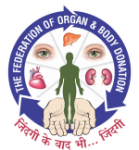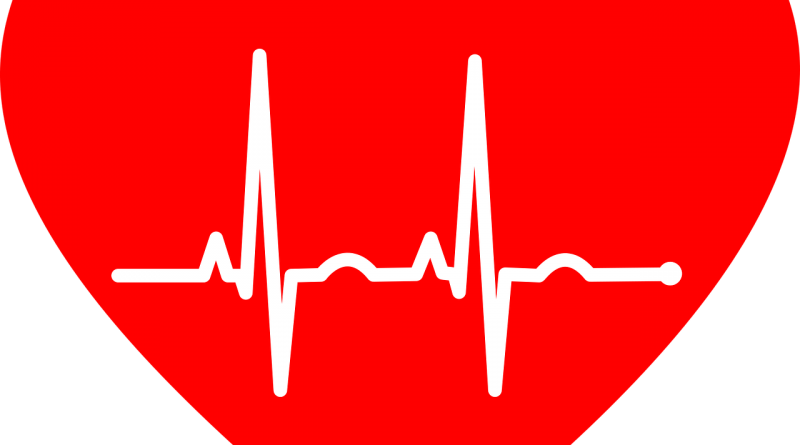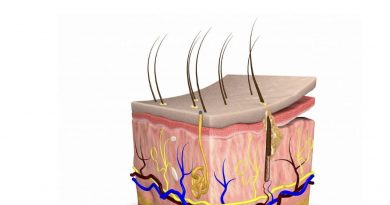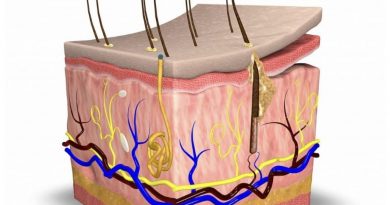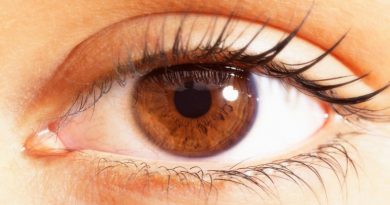Organ Donations – Cadaveric
Cadaveric Organ Donation
Human body is a perfectly designed processing plant, composed of various small units (Called Organs) magnificently interconnected and dependent on each other for proper function. All the working of these units is monitored and controlled by a control tower called Brain. This plant works nonstop, to facilitate this some of the units- (now we will call them Organs) work autonomously their functioning is monitored by the brain and if something goes wrong corrective action is initiated by brain. The input to this plant means Body, are Food, Water and Oxygen. Food and Water are used to produce various chemicals, enzymes to give nourishment to the body as well as support to all the body functions. Oxygen is the main power source for Brain & all the Organs. If the Oxygen supply is interrupted or stop the Organs malfunction or in worst case stop functioning. The major Autonomous Organs performing vital functions are –
- Lungs
- Heart
- Liver
- Kidneys
- Pancreas
- Intestine
Malfunction of any of the above Organs affects other Organs especially induce lot of stress on Heart which later causes Heart Failure and Death.
Scientists all over the world are studying and researching remedies to cure the
malfunction/diseases of the above Organs since long. This research was going on for thousands of years. All Mythological and Historical records show evidence of such research and remedial procedures. The major focus was on cure of War Wounds, hence more experiments were done on Skin Grafting and Amputation of injured body parts. One old painting shows a transplant performed on the entire leg.
Serious and more focused research on Organ Transplant started in the 20th century. Many experiments were conducted on animals. Technically successful kidney transplants were accomplished first by Emerich Ullmann, who in 1902 performed a dog transplant and a dog-to-goat graft. In 1906, the first two kidney transplants in humans were performed by Jaboulay using a pig donor for one and a goat donor for the other. Ernst Unger, after first performing more than 100 kidney transplants in animals, performed the third and fourth human transplants in 1909 using monkey donors. None of these early human kidney Transplants functioned for more than a few days, and all of the patients soon died.
In 1933, the Soviet surgeon Yu Yu Voronoy performed the first human-to-human kidney transplant. Between 1933 & 1949 Voronoy performed four more human transplants but all failed.
On December 23, 1954, Joseph Murray overcome the rejection from body immune system by using the patient’s identical twin as the donor of a human kidney transplant. The research and experiments continued worldwide thereafter. Until 1968 only live donor’s Kidneys were used for transplants. Later the concept of utilising organs from “Heart beating cadavers” took pace and the Brain Death concept was accepted in 1968. Thereafter Organs from Brain Dead persons are used for transplant.
Along with the research on Surgical procedure of transplant, parallel research was going on to minimize the rejection of foreign organs by the immune system of the body And utilizing organs from unrelated donors and recipients. The outcome of these researches was discovery of immunosuppressant medicines and crossmatching of Recipients & Donors Blood and tissues. These discoveries facilitate higher success and survival rate of transplant surgeries.
After knowing all the history of Medical Miracle in treatment of chronic disorder of vital Organs, a new era of Modern Transplant surgeries begins. The Organ Transplant is possible with Live Donors for few specific organs then next step is Cadaveric Organ transplant, where transplant of organs like Heart, Lungs also became feasible.
What is Cadaveric Organ Transplant?
Utilizing Healthy and useful Organs from “A Heart Beating Cadaver” for transplant called Cadaveric Organ Transplant. Now you will say how the Cadaver can be Heart Beating? Person is Dead only when the heart stops beating, it is called circulatory death & Brain death is one when there is irreversible brain damage leading to cessation of brain functions, however, heart keeps beating.
This one step before absolute Death is now recognized by the Medical Community is called Brain Dead. We know and also explained in the beginning that all our vital Organs are autonomous and can continue functioning as long as the Blood Circulation supplying Oxygen to these organs is continued. When Brain gets damaged beyond recovery due to Injury or Hemorrhage, which is confirmed by conducting a series of tests, and certified as Brain Death. The Blood circulation and Oxygen supply is maintained by external life supporting systems. This keeps the vital organs functioning till the life supporting system is disconnected. This condition is called “Heart Beating Cadaver” With due permission from the direct relatives of the Brain Dead person according to the Government rules the healthy organs can be transplanted to another needy person. In India this complete process is controlled by the act called Transplant of Human Organs and Tissue Act 1994, Amended in 2011. The Process of getting consent from the Direct Family to use Organs without expecting any compensation is known as “Organ Donation”
Following organs can be donated from cadaver:
Heart
Lungs- 02
Liver
Pancreas
Intestine
Cornea-02
Limbs
Skin
Kidneys-2
What is the need of “Organ Donation”
Most of the Organs can only be retrieved from Brain Dead Cadaver and this retrieval is only possible after getting due consent from the direct relative. Hence the Organ Donation is the only way to get the required Organs. In India almost 500000 persons lose their life every year due to non-availability of suitable / matching Organs, against such a huge requirement we only get about 1000-1500 Organs. This gap is mainly caused because of lack of awareness as well as misconceptions and myths in the mind of general people.
This creating awareness is the herculean task before the NGO’s like “The Federation of Organ and Body Donation”.
What is Organ Donation
Organ Donation means “allowing” transfer of healthy organs from “one person (Donor)” to “another person (Recipient)” as replacement of damaged organs. This process is strictly carried out in accordance with “Transplant of Human Organ & Tissue Act 1994 – amended in 2011” One Cadaveric Organ Donation can save up to 8 lives.
What is the difference between Coma & Brain Death
Coma :-
Coma is a state of deep unconsciousness as a result of the brain being injured by some means. The brain continues to function and this is confirmed by tests carried out.
A person in a coma can breathe without the help of a supporting system. The brain can heal while a person is in a coma. Coma is reversible whereas Brain Death is an irreversible coma.
Brain Death :-
Brain Death is caused by a severe injury to the brain, Haemorrhage, or Tumour. All the portions of the brain get damaged and cannot function hence stop working. This is an irreversible condition. Vital body functions can be continued by using an artificial support system that allows blood circulation to vital organs to continue and enable Organ and Tissue Donation.
Donation Process
STEP 1
The Doctor from ICU medically evaluates each potential donor and determines
the medical suitability of each organ. He obtains detailed medical information
about the patient’s medical condition and history.
STEP 2
Once he finds that the patient is clinically brain dead he then informs the patient’s
condition to the patient’s direct relatives. Giving them below options:
- Do Not Resuscitate (DNR)
- Continue whatever treatment is going on
- Organ Donation
STEP 3
If the relatives give their verbal consent for Organ Donation then the transplant
coordinator comes into the picture.
STEP 4
In the case of a brain dead person, the treating Doctor and the transplant coordinator
meet the potential donor’s next of kin. If the relative agrees to donate, they will inform in detail
the process of organ donation, time required for the process and which organs can be
donated. If near relatives give permission to go ahead with organ donation then
the treating Doctor begins some tests.
STEP 5
The treating Doctor first performs an apnoea test & other relevant tests on the patient to ascertain brain death.
STEP 6
Six hours after the first test, the second set of apnoea & other tests will be performed to confirm the brain death. These tests, its evaluation & interpretation is done by the Brain death Committee which is formed by the government under the THOTA Act. After the declaration by Brain Death Committee, The transplant coordinator can counsel the patient’s relatives to sign a consent form documenting which organs and/or tissues they wish to donate.
STEP 7
The retrieval of the organs is done at the operating theatre where the donor is being
treated. The transplant coordinator communicates with the retrieval teams regarding
their logistics, and performs other formalities required for organ donation.
The retrieval team consists of expert surgeons and supporting staff, the transplant coordinator and
an organ preservation technician.
STEP 8
The retrieved organ/ organs are transplanted into recipients’ bodies by a team of highly expert Surgeons / doctors.
Process of becoming Donor
Process of becoming a Donor is nothing but expressing your willingness to Donate your all useful or selective organs in the event of your Death. Register your wish as a pledge in prescribed form (Form 7A as per THOTA) with any authorized agency. All these Institutes, NGOs, Hospitals are affiliated with “National Organ & Tissue Transplant Organization (NOTTO)” a government body which controls and monitors Organ Donation related activities.
Since the Process of Donation and then transplant starts after Death of the wishful Donor, hence actual decision of honouring the wish of the Donor is taken by the Direct Family Members of the deceased. It is the responsibility of the Donor to inform and explain his wish to all his/her Family members clearly. The form of making a pledge normally requires consent from Family members. Their contact details as well as the information of the Doctor who is regularly treating the Donor say ‘Family Doctor.
Appeal to all the people
Please Know The:-
· Concept of Organ Donation
· Necessity of the Donation
· Process of the Donation
· Authorized Institutes near you.
· Facts against the mis-concepts.
· Benefits to Society.
Please Participate by:-
· Registering Pledge to Donate Organs.
· Spreading the necessity of the Donation.
· Removing mis-concepts in People’s mind.
· Support and guide the Family of your Near & Dear ones if an unfortunate event occurs which may lead to the possibility of Organ Donation.
